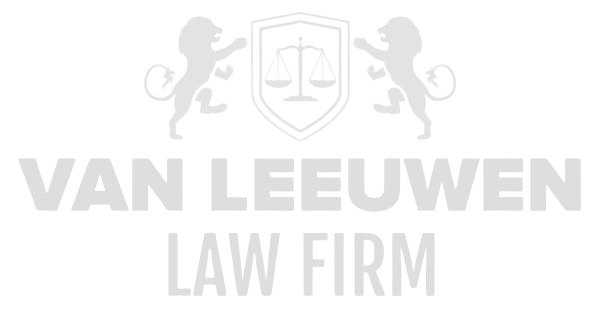In a world increasingly driven by technology—where digital infrastructures and cross-border financial networks underpin the very foundations of the modern economy—financial and economic crime has assumed a new and formidable form. Gone are the days of handwritten ledgers and paper-based transactions; today’s threats emerge through cyberattacks, sophisticated digital money laundering schemes, unregulated cryptocurrency flows, and intricate frameworks that leverage artificial intelligence and automated algorithms to elude detection. This digital evolution has not only magnified the scale on which financial-economic offences can occur, but also accelerated the speed at which damage can unfold. In this new era, saturated with risk, it is no longer a hypothetical danger that national and international companies, their executive and supervisory boards, and even government entities might be accused of involvement in illicit activities—it is a daily reality. A reality that unleashes legal, reputational, and operational catastrophe with chilling efficiency.
The impact of allegations related to financial and economic crime—whether substantiated or not—can be profound and far-reaching. National and international enterprises, their boards, supervisory organs, and public institutions are consistently confronted with the unforgiving consequences of negative press, frozen accounts, regulatory probes by domestic and supranational authorities, and in many cases, criminal prosecution. Even a mere suspicion can trigger shareholder flight, collapse critical investment rounds, and bring longstanding partnerships to a sudden and irreversible halt. In such a climate, managing the risks associated with financial and economic crime is no longer a bureaucratic footnote; it has become a strategic and existential imperative. Integrity, compliance, and transparency must not only be embraced as noble ideals—they must be elevated to core operational pillars. Not for reasons of moral high ground, but as a rational act of survival in an age where reputation and credibility can be dismantled in seconds, targeted by forces operating through the shadows of cyberspace.
This is not a time for hesitation. It is a time for vigilance, for unflinching clarity, and for an unshakable commitment to legal and strategic fortitude.
Digital Threats and Structural Vulnerabilities
The digital world offers unprecedented opportunities for innovation and efficiency but simultaneously exposes the Achilles’ heel of financial ecosystems. With each new technological development arises a new vulnerability—a new point of attack that malicious actors can exploit. Artificial intelligence, blockchain, big data, and digital payment methods can serve as instruments for transparency, but also as vehicles for fraud, money laundering, corruption, and the financing of illegal activities. Criminals hide behind digital layers of anonymity and geographic fragmentation, rendering traditional investigative methods insufficient. Digital infrastructures are globally interconnected but legally fragmented; this paradox offers criminals a safe haven in the vacuum between legal systems.
As a result, financial institutions and businesses are compelled to continuously identify their digital weak spots, anticipate new attack techniques, and strengthen their internal control systems to an unprecedented degree. Systems for transactional monitoring, real-time analysis of digital behavior patterns, and the integration of machine learning in compliance processes are no longer luxuries—they are the bare minimum required to maintain control. Yet no system is fully watertight, and reliance on technology brings the inherent risk that a single system failure or unmonitored access point could trigger a cascade of abuse and legal liability.
The role of governing bodies and regulators has fundamentally shifted in this digital context. Executives are no longer judged solely on strategic policy but also on their ability to manage risks in a digital reality. The bar for ‘due diligence’ is higher than ever, and failure to respond adequately to signals of fraud or abuse can result in personal liability, civil damages, or criminal prosecution. This development demands a transformation of governance models, in which digital expertise and legal resilience must go hand in hand.
Reputation Under Fire: The Invisible Damage of Accusation
An accusation of involvement in financial or economic crime has a devastating impact on an organization’s reputation. The damage occurs not only in courtrooms but primarily in the public arena, where perception judges faster than facts. In a world where news goes viral within seconds, a headline or social media post is enough to destroy decades of built-up reputation. Public opinion is merciless, and even a later acquittal often cannot undo the loss of trust, brand value, and customer relationships. The market reacts immediately—and often irreversibly.
Reputational damage has far-reaching consequences on multiple fronts. Investments dry up, customers switch to competitors perceived as safer, and internal staff become demotivated or leave the company. Stakeholders such as shareholders, regulators, and financial partners distance themselves from the organization out of fear of association with risks or future sanctions. This cascade of consequences reinforces itself in a vicious cycle of eroding trust and increasing market isolation.
Preventing reputational damage requires a detailed strategy that goes far beyond traditional PR measures. What is needed is an integrated approach where legal argumentation, factual reconstruction, communication planning, and psychological analysis come together. Only by being prepared for potential scenarios and crisis moments can organizations defend their credibility before public judgment takes hold. In this context, reputation is not a side effect, but a strategic asset that must be actively managed.
Executive Liability: The Sword of Damocles
In an era where oversight and transparency are central, the responsibility of executives and supervisory directors has significantly increased. Lawmakers, regulators, and courts now demand that they actively monitor what takes place within their organizations and do not settle for a passive attitude. Executive passivity or ignorance is increasingly less accepted as an excuse. A director who ignores warning signs, cannot substantiate an ‘in control’ declaration, or fails to safeguard oversight systems risks being held civilly, administratively, or even criminally liable.
This evolution has turned the boardroom into a legal battleground where every decision, omission, and email can come under intense scrutiny. It is no longer sufficient to have procedures on paper; the test lies in implementation, monitoring, and enforcement. Courts assess not only what is formally documented but also what has actually occurred, what risk assessments were made, and whether the executive did everything in their power to prevent or detect wrongdoing.
This requires a fundamental revision of how governance is conducted. Appointing independent compliance officers, conducting regular forensic audits, and securing whistleblower mechanisms are no longer symbolic gestures but legal imperatives. Executives must have a demonstrable risk strategy, including documentation and decision-making processes that enable accountability. The era of intuitive leadership is over; the era of legally substantiated risk management has definitively begun.
International Dimensions: The Threat Without Borders
In a globalized world, financial and economic crime is rarely a local phenomenon. Perpetrators operate transnationally, hiding in jurisdictions with weak regulations and using international financial networks as vehicles for moving illicit funds. At the same time, regulators, judicial authorities, and financial institutions are collaborating internationally to combat this type of crime. The result is that companies and institutions are no longer judged solely by national laws but are subject to a web of international norms, treaties, and compliance standards.
This international context requires organizations to be aware of the extraterritorial reach of certain laws, such as the U.S. Foreign Corrupt Practices Act (FCPA), the UK Bribery Act, and sanction regimes from the United Nations or the European Union. Even incidental involvement in a transaction with a sanctioned entity can lead to exorbitant fines, exclusion from international markets, or criminal prosecution. Moreover, international cooperation among law enforcement agencies means that an investigation in one country can immediately impact legal proceedings in others.
Strategically navigating this complex legal landscape demands a deep understanding of international legal standards and sanction regimes, as well as internal systems that ensure global compliance. Multinational organizations must proactively conduct risk analyses at the branch level, screen transactions in advance using advanced tools, and continuously audit the integrity of their supply chain. In this dynamic between legal certainty and enforcement, preparation is the only shield against legal ambush.
Internal Fraud and Cultural Erosion
Fraud is not always the work of external actors. The threat often comes from within. Employees, managers, or even board members may become involved in fraudulent activities, driven by financial pressure, resentment, or a culture of impunity. Internal fraud is particularly insidious because it often goes undetected for long periods and leaves deep scars—both financially and in the moral backbone of the organization.
A culture that sanctifies targets and ignores signs of wrongdoing is fertile ground for fraud. This culture is often not explicit—it manifests in implicit incentives that normalize risk-taking, confuse loyalty with silence, and punish whistleblowing instead of rewarding it. Fraud thrives in organizations where ethics are treated as a PR tool rather than a strategic foundation.
Combating internal fraud requires a structural approach that goes beyond control measures to include cultural change. Training, awareness campaigns, internal reporting structures, and periodic cultural assessments form only the foundation. What is truly needed is leadership that embodies ethical behavior, enforcement of norms without favoritism, and the active encouragement of transparency at every level of the organization.
Legal Procedures and the Role of Forensic Investigation
When an organization faces suspicions of financial or economic misconduct, the playing field inevitably shifts to the legal arena. In this context, forensic investigation is an indispensable tool for reconstructing facts, substantiating defenses, and refuting accusations. A properly conducted forensic investigation enables the identification of patterns, tracing transactions, securing digital evidence, and analyzing internal communications with a clear legal purpose. It is not a discretionary exercise but a focused instrument that forms the foundation of every litigation strategy.
The forensic investigator operates at the intersection of data analysis, behavioral science, and legal interpretation. Securing emails, log files, financial transactions, and even metadata can mean the difference between legal conviction or strategic exoneration. In this phase, speed is important, but never at the expense of accuracy. Any inaccuracy, incompleteness, or poor documentation can later be interpreted as intentional withholding or manipulation of information, with all the consequences that entails for the credibility of the defense.
At the same time, forensic investigation should not be limited to reactive measures. Increasingly, internal audits and risk analyses are proactively used as instruments for integrity testing. This proactive application of forensic techniques enables organizations to detect emerging risks in time, implement corrective actions, and maintain stakeholder trust. The use of forensic investigation thus evolves from a merely defensive tool into a structural component of governance and risk management.
Communication Strategy as Legal Defense
In the era of direct digital communication, where news spreads faster than official statements can follow, communication is no longer a separate domain but an integral part of legal strategy. A poorly formulated press release, an inconsistent message, or even silence can legally be interpreted as admission of guilt or deception. Therefore, communication—from the first response to the final evaluation—must be carefully considered, legally substantiated, and strategically aligned across all relevant jurisdictions.
In the event of an accusation, it is essential that the organization immediately activates a crisis communication protocol in which roles, authorities, messaging, and approvals are strictly defined. The tone must be both strong and nuanced: denial of involvement should never give the impression of trivializing the matter, while openness must not be confused with legal exposure. Every statement, no matter how small, carries significance and can be used by regulators, the press, or opposing parties as evidence in legal proceedings.
The communication strategy must run in parallel with the legal fact-finding investigation. There must be no discrepancy between the factual reconstruction of events and the external message. Transparency, consistency, and diligence are key. This requires close collaboration between lawyers, communication experts, and board members, with all communications legally reviewed in advance. Only a coherent and legally defensible communication can prevent reputational damage and support the organization’s legal position.
Compliance as a Strategic Duty, Not a Checkbox
Compliance is often viewed as a legal obligation, an administrative burden, or a prerequisite for licenses and partnerships. But in the context of financial-economic crime, compliance shifts from a legal requirement to a strategic condition for survival. Implementing a robust compliance framework is not merely protection against sanctions but a shield against reputational damage, managerial liability, and market exclusion. In a world where transparency and reliability drive market success, compliance is not a cost but an investment in legitimacy.
An effective compliance program is comprehensive. It includes not only classic elements such as policy documents, codes of conduct, reporting procedures, and sanction rules, but also continuous monitoring, periodic review, and keeping risk profiles up to date. Special attention must be given to sector-specific risks, cross-border transactions, third parties, and supply chains. Compliance does not stop at the headquarters but extends to every partner, supplier, agent, or intermediary acting on behalf of the organization.
However, the strength of a compliance program lies not only in systems but in the culture that supports it. A paper reality without embedding in behavior and decision-making is doomed to fail. Compliance must be integrated into strategic decision-making, supported by top management, and regularly evaluated for effectiveness. Only then can it be demonstrated that the organization has “done everything reasonably expected”—the ultimate benchmark in legal proceedings.
The Psychology of Prevention: Behavior as the Basis for Risk Management
Preventing financial-economic crime does not start with rules but with people. Behavior forms the core of every compliance effort. Understanding why people break rules, under what circumstances fraud arises, and which social or psychological dynamics underlie it is essential for effective prevention. People make mistakes, are tempted, or feel justified bending rules. Recognizing these patterns requires more than technical control; it requires behavioral insight.
Behavioral economics, social psychology, and ethics offer valuable tools to translate these insights into policies. Creating an environment in which desired behavior is encouraged and undesired behavior is detected early is crucial. This means, among other things, that top management leads by example, internal reporting is rewarded rather than punished, and ethical dilemmas are discussed before they escalate. Prevention is only effective if it connects with the human reality of decision-making under pressure.
Therefore, every financial risk management program should be supplemented with behavioral research, risk analyses based on human factors, and interventions aimed at influencing culture. Workshops, scenario training, dilemma dialogues, and ethical audits are not fashionable add-ons but structural parts of a resilient organization. An organization that ignores the human aspect exposes itself to repeated incidents and undermines the credibility of its own preventive systems.
Resilience Strategy: Prepared for the Unforeseen
The ultimate characteristic of an organization that takes its financial and economic risks seriously is its ability to respond resiliently when the unforeseen occurs. No system, however robust, is immune to errors, betrayal, or bad luck. Therefore, in addition to prevention and detection, recovery capacity must also be established as an integral part of risk management. The question is not whether an incident will happen, but how the organization responds when it does.
A resilient organization has scenarios, playbooks, escalation routes, and communication strategies. It knows its legal, operational, and reputational risks and knows exactly who must make which decisions under pressure. Attention is paid to whistleblower protection, victim support, coordination of external advisors, and securing evidence. Resilience requires preparation, practice, and continuous adjustment to changing circumstances.
But resilience is more than logistics or technology. It is a mindset that says: “We will not be surprised, we will not be broken.” It is an attitude of anticipation, where signs of weakness are turned into lessons, mistakes into improvements, and crises into opportunities for reform. An organization that truly understands what is at stake invests not only in prevention but in a resilient identity that can weather any storm.
Legal Risk Management and Reputation Recovery in an Era of Unfathomable Risks
In the digital age, where financial and economic crime can no longer be contained within national borders, simple transactions, or traditional motives, merely reacting to incidents is no longer sufficient. The risk landscape is fluid, unpredictable, and relentless. The modern organization operating on a global stage is constantly tested by forces lurking in digital flows, opaque ownership structures, and legal complexity. In this landscape, legal control is not a theoretical ambition but an operational necessity. The ability to detect threats early, analyze them adequately, interpret them legally, and strategically neutralize them determines whether an organization survives or perishes.
An organization’s reputation is its most vulnerable asset and, in this context, becomes a sui generis legal asset. When executives, regulators, or institutions face allegations of fraud, money laundering, corruption, or other economic crimes, it is not the question of guilt that causes the most immediate damage—it is the perception. In a world of social media, leaks, and real-time reporting, perception has become reality. Reputation recovery therefore requires not cosmetic measures but a thorough legal strategy that goes hand in hand with communication, compliance, and forensic remediation. Only a coordinated approach covering all fronts can restore the trust of regulators, markets, and the public.
Therefore, in this age of structural mistrust and hypercomplexity, there is only one imperative: control the risk before it takes over. The organization that succeeds in this, linking legal intelligence to technological resilience, behavioral coding to strategic decision-making, and forensic remediation to proactive compliance, enables itself not merely to survive but to lead. Not through fear, but through mastery. Not by waiting, but by anticipating. In this discipline lies the difference between legal downfall and sustainable legitimacy.








